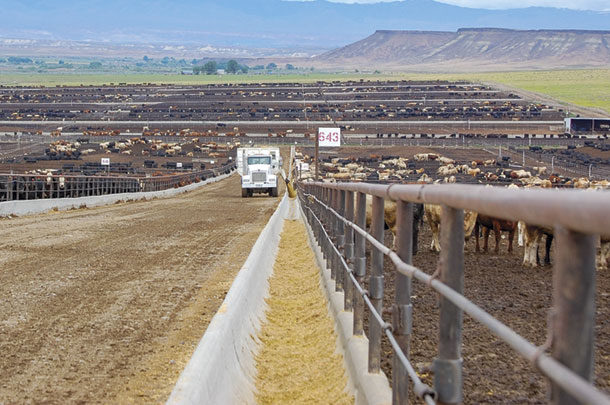Ranchers who have been producing beef for a while are aware of the cyclical nature of the business. The industry builds numbers generally for three to six years, then liquidates numbers for four to eight years, making the typical cattle cycle last nine to 11 years from peak to peak or trough to trough.
The period of expansion is typically referred to as the building phase, and the contraction period is known as the liquidation phase. Mother Nature can disrupt this pattern such that the cycle will be shorter or longer.
The cattle price cycle coincides with the production cycle. For the most part, the price cycle is driven by supply and demand. Stronger prices are usually supported by a smaller cow herd and thus a smaller calf crop, increased demand for beef or a combination of both. As the price of beef declines, producers react and reduce production.
This creates a lower supply that would then typically support higher prices. With higher prices, producers again react and increase production to make more beef. This sends prices lower again, thus creating the age-old cattle cycle. This explanation is admittedly a bit oversimplified since there are many players throughout the production system. For instance, there are other factors that impact supply, such as imports from other countries, fed cattle carcass weight and percent of cull breeding animals in the mix.
As the supply ebbs and flows, so does the demand for beef. Higher prices can be experienced during periods of increasing supply if the demand for beef is also increasing. Likewise, prices can suffer when supplies are decreasing if demand is also declining. A good example of this was in 2020 during the COVID-19 shutdowns, when the demand from the food service sector dried up almost overnight. So let’s investigate the current situation and the supply-and-demand factors that are expected to influence cattle prices into the future.
Where are we in the cattle cycle? In 2019, cattle producers began to liquidate the cow herd. This was reflected in the Jan. 1 cattle inventory report for 2020. Producers continued to reduce the nation’s cow herd in 2020. Indicators of continued liquidation are revealed in reported numbers for beef cow slaughter and percent heifers in the slaughter mix. Current numbers and estimates for future beef production should support higher prices. Demand is robust both domestically and internationally. It appears the fundamentals are all in place to support higher prices. So why are prices struggling to move higher?
The answer is not simple. As is the case many times, there are multiple factors creating headwinds to stronger prices. One headwind is the price of corn and, to a lesser degree, soybeans. Even with most calves being produced primarily with forage, the stocker sector in recent years has become more dependent on byproduct feeds. Many byproduct feeds come from the further processing of corn into ethanol and the extraction of oil and meal from soybeans. With higher cost of gain for stocker cattle as well as for feeders while in the finishing sector, this puts pressure on the price of calves and stockers even when supplies are declining.
Slaughter capacity and sufficient labor in the processing sector has been and continues to be a challenge. COVID-19 restrictions have exacerbated the issue more. Even with very strong beef demand, somewhat of a bottleneck has developed in this sector. This bottleneck has not allowed cattle to be slaughtered fast enough to alleviate burdened supplies in feedyards.
So when can the industry expect some relief and the likelihood of higher prices? Everyone would like to know the answer to this question. Relief from higher feed prices will not come until the size of the 2021 U.S. corn crop is known with some degree of certainty. The USDA publishes periodic updates of the crop. These reports will provide some insight into what to expect. Another major player in the corn market is Brazil. Currently, Brazil’s crop is under drought stress and lower-than-expected production is predicted. World corn and soybean production must be strong for cattle producers to see lower feed prices.
As COVID-19 restrictions are loosened, beef packers will be able to utilize more workers in their plants and therefore increase throughput. More food service establishments will open, which should result in much greater demand for beef from that sector.
There are good reasons for cattle producers to be optimistic about the future profitability of their cattle enterprises. Barring any more black swan events, this optimism should come to fruition later this year.









